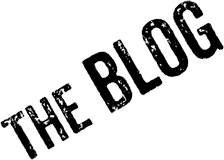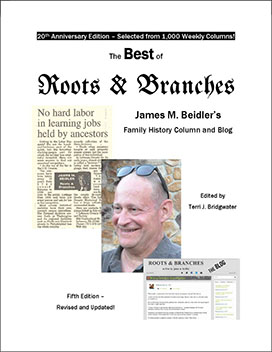Published December 29, 2024
| | Leave A ReplyOver the years I’ve talked about the idea that sometimes you figuratively stare at a genealogy problem “straight on” for too long when you should be looking at it “From an angle.”
What do I mean by all that? Well, let me give you a couple of those angles.
One is in response to the annoyance found in a fair number of FamilySearch.org’s digitized records that were originally microfilmed with all the left-hand pages of a register first followed by all of the right-hand pages.
My friend Carolyn Schott from Washington state recently commented on what a pain this can be, especially in her case in which the record spanned both left- and right-hand pages.
I’ve confronted this on a number of occasions with German church records and swore under my breath until I realized looking at Schott’s lament that one solution would be to have the digitized microfilm open in two tabs simultaneously so that you can easily flip back and forth between the lefts and the rights!
Another “angle” occurred to me when looking at a bunch of posts in the Facebook group Pennsylvania German Tombstones from member Fred Kelso that reproduce advertisements from 19th century newspapers of stone-cutting businesses.
This of course intersects at two of my genealogy interests—historical newspapers and Germans (actually three if you count tombstones!)—but really got me thinking about the many ancestors for whom there are no extant memorial markers.
I’ve seen abstracts of an early 1800s stonecutter’s journal in the Lebanon area, which gave names and birth and death dates for the stones he was carving.
And I’ve actually seen and touched the voluminous registers of the tombstone-cutting Moers family of Reading, Berks County, which are housed along with about a thousand business journals and ledgers in the Landis Valley Village & Farm Museum’s collections.
They helped me solve one genealogical mystery since they recorded when the tombstone was carved for one of my four-great-grandmothers, which was the closest documentation of her death I can find.
Which then leads me to the question: How many of other stonecutters’ ledgers and journals might exist elsewhere, by they in special-collections libraries or successor businesses?
There are many types of death records … and this would be one more!
Since we’re close to the end of the year, another “angle” from me comes in the form of a New Year’s resolution: It’s about time I learn more about what ethical uses of artificial intelligence there are to help with my genealogy.
I’ve been pretty anti-AI and that probably stems from hearing at least once too often about people using AI to write this or that.
When writing is something that you consider one of your skills—and one that any genealogist should consider as such!—that has led me to take too dogmatic a position.
So, that will be on my learning agenda for 2025!

